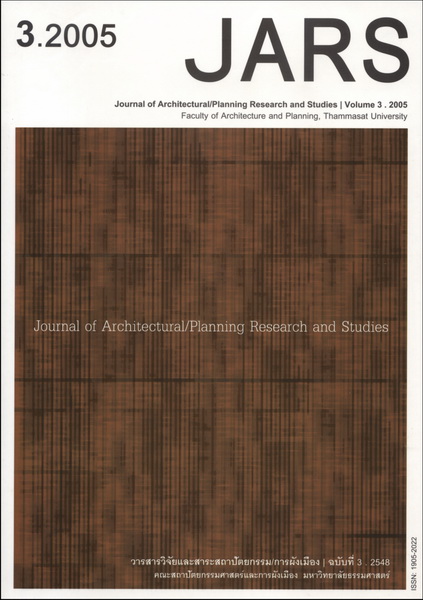Coastal Management: The Guidance after Tsunami in the South, Thailand
Main Article Content
Abstract
The Tsunami disaster in December 2004 has contributed to a big attempt in environmental rehabilitation in Andaman coastal provinces, Krabi, Phuket, Ranong Pangnga and Satul. This movement involves the revise of the current land use plan especially in the damaged areas along the coastal line. One cause of the numerous property damages is the lack of knowledge in managing natural resources on coastal sites that brought to improper land use, beach intrusion and improper building structures. An example of improper land use plan is the urban infrastructures devastated in Phuket, which affects human sanitary and water scarcity after the disaster happened.
Coastal management is a tool to control natural resource consumption through land use planning, regulation and management, building construction guidelines, etc. The tool needs integration in various fields of studies and collaboration among different levels of governments. This article proposes guidelines from several case studies related to coastal management in a coastal disaster zone. To prepare plans for the future, this article focuses on strategies in terms of physical planning and management in a sustainable way.
Downloads
Article Details

This work is licensed under a Creative Commons Attribution-NonCommercial-NoDerivatives 4.0 International License.
All material is licensed under the terms of the Creative Commons Attribution 4.0 International (CC-BY-NC-ND 4.0) License, unless otherwise stated. As such, authors are free to share, copy, and redistribute the material in any medium or format. The authors must give appropriate credit, provide a link to the license, and indicate if changes were made. The authors may do so in any reasonable manner, but not in any way that suggests the licensor endorses you or your use. The authors may not use the material for commercial purposes. If the authors remix, transform, or build upon the material, they may not distribute the modified material, unless permission is obtained from JARS. Final, accepted versions of the paper may be posted on third party repositories, provided appropriate acknowledgement to the original source is clearly noted.
References
ศิริคำพร. “วิบากกรรมคนบ้านน้ำเค็ม นายทุนรุมทึ้งที่ดิน.” สำนักข่าวประชาธรรม. 6-11 มีนาคม 2548. Online. Internet. Available: http://www.turn.to/pnn
Lau, Stephen and Shimatsu, Yoichi. (2005). Sustainable Resorts: Learning from the Boxing Day Tsunami. 5-8.
Clark, John R. (1996). Coastal Zone Management Handbook. Boca Raton Fla. Lewis pub, 25-32.
คณะวิทยาศาสตร์จุฬาลงกรณ์มหาวิทยาลัย. (2545). คู่มือการจัดการแหล่งธรรมชาติประเภทชายหาด. กรุงเทพฯ: สำนักงานนโยบายและแผนสิ่งแวดล้อม, 3-4.


